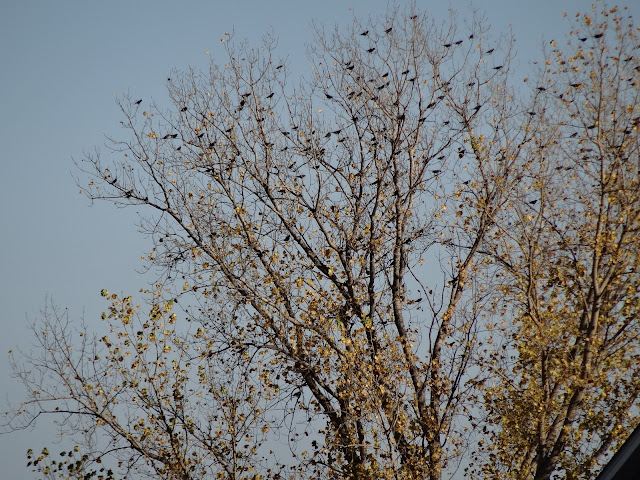Flocks of blackbirds gathered to roost for the night in the big cottonwood tree far across the pond.
Now that birds are finished defending their nesting territories and raising young birds, they begin congregating in really large flocks to feed and protect one another from predators like owls and hawks. The birds gathering may be a mix of Red-winged Blackbirds and Starlings, Cowbirds, and Grackles.












